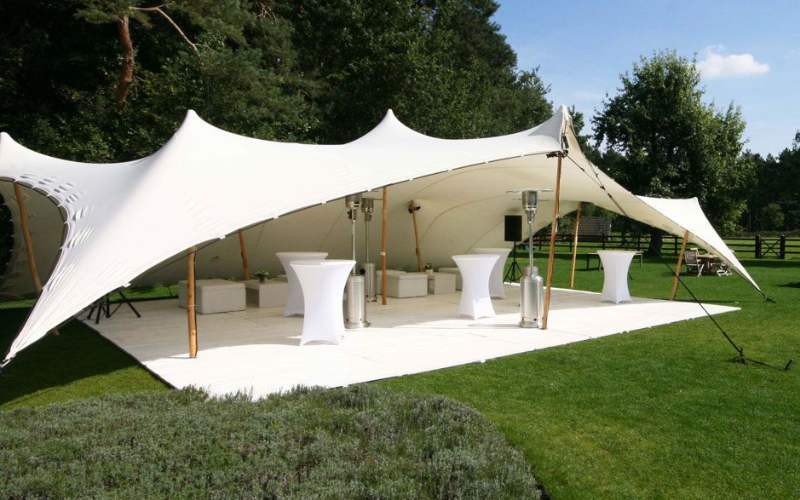When it comes to unique and practical architectural solutions, permanent structures have been making waves across various industries for their versatility and sustainable features.
But what exactly is a permanent tent structure called? In this article, we’ll explore the various aspects of these structures, including their names, uses, benefits, and some examples from around the world.
Understanding
A permanent tent structures is often referred to as a “tensioned fabric structure” or “tensile structure.” These structures are characterized by the tension of the fabric being the primary means of support to the material, which is stretched over a frame made typically of steel or aluminum. This innovative design allows for large, open spaces covered by a membrane that can withstand environmental elements like wind, rain, and snow, making it durable enough for long-term use.
The Appeal of Tensile Architecture
Tensile structures are celebrated for their aesthetic flexibility and ecological benefits. They can be designed in various shapes and sizes, adapting to different environments and purposes. Their ability to cover expansive spaces without the need for internal supports or columns gives them an edge over traditional building methods, providing unobstructed views and versatile usage of interior space.
Common Uses
These structures are incredibly versatile and can be found in a range of settings:
- Commercial Areas:
They are popular in commercial spaces such as retail centers, outdoor markets, and exhibition halls where large, open spaces are desirable.
- Sports Facilities
Many sports facilities opt for tensile structures to cover stadiums or swimming pools because they can span large areas without supports blocking views.
- Event Venues
From wedding receptions to corporate events, these structures provide an elegant solution that can be customized to fit the theme and scale of any event.
- Educational and Religious Facilities
Schools and religious organizations often use these structures for auditoriums, chapels, and outdoor classrooms.
- Transportation Hubs
Airports, bus stations, and train stations use tensile structures to provide sheltered, well-lit spaces for passengers.
Benefits of Tensile Structures
The benefits of using a permanent structure tent are numerous:
- Durability
Made with weather-resistant materials, these structures are designed to last for many years with minimal maintenance.
- Energy Efficiency
The fabric often used in tensile structures is reflective, which helps in reducing heat absorption and lowering energy costs.
- Quick Construction
As the components are often prefabricated, the assembly of tensile structures can be significantly quicker than traditional construction.
- Cost-Effective
The reduced construction time and lessened need for raw materials often make these structures more cost-effective.
- Aesthetic Quality
With their sleek, modern designs, tensile structures can provide a visually striking addition to any landscape.
Examples from Around the World
Globally, several famous structures exemplify the use and beauty of permanent tent structures:
- Denver International Airport: Known for its peaked roof structure, it mimics the snow-capped mountains and is an iconic example of tensile architecture.
- The Millennium Dome in London
Now known as The O2 Arena, this was one of the largest tensile structures when it was built in 2000.
- Khan Shatyr Entertainment Center in Kazakhstan
As one of the tallest tent structures in the world, it is a marvel of modern engineering and design.
Conclusion
Permanent tent structures, or tensile structures, offer a unique blend of aesthetics, functionality, and sustainability. They are adaptable to numerous uses, from commercial ventures to personal or community events. Their growing popularity is a testament to their effectiveness and efficiency, pushing the boundaries of traditional architecture into new, innovative territories.
This fascinating blend of engineering and design not only meets the practical demands of modern structures but also inspires awe and appreciation for the possibilities of architectural innovation. As we continue to explore and expand the applications of these versatile structures, their impact on architecture and design is bound to increase, reshaping our built environment in profound ways. Thank visiting bloggersranking.com


